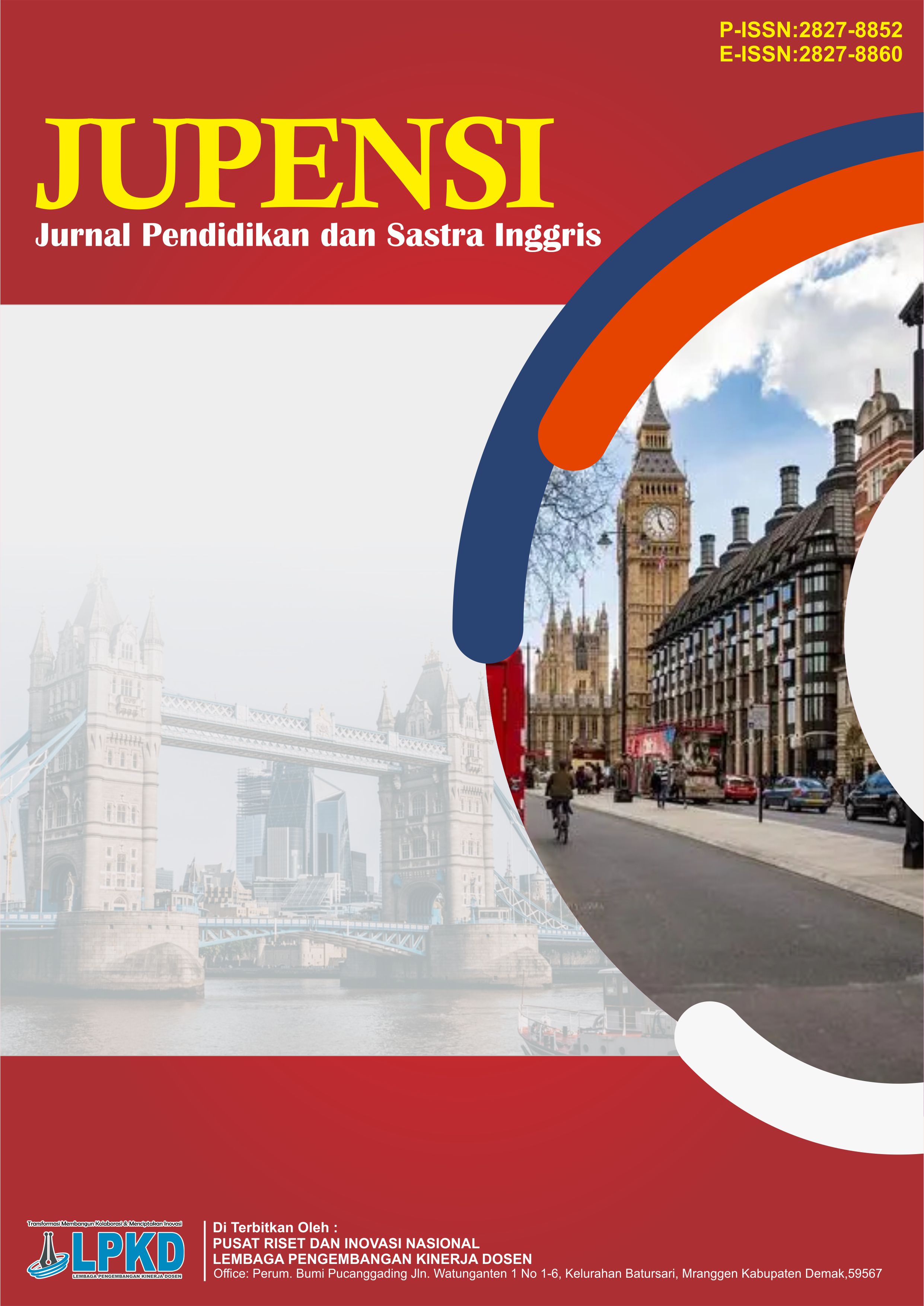Positive Politeness Strategies by Palpatine in Star Wars : Revenge of the Sith
DOI:
https://doi.org/10.55606/jupensi.v5i2.5620Keywords:
Palpatine, Politeness, Positive-Politeness Strategies, Pragmatics, Star WarsAbstract
Revenge of the Sith, highlighting how these linguistic tools function as instruments of persuasion and manipulation. As the primary antagonist who masterminds the political and military conflict, Palpatine demonstrates an exceptional ability to control and influence other characters through carefully crafted dialogues. His language choices are not merely designed to maintain social harmony or reduce face-threatening acts (FTAs), but also to achieve hidden personal objectives. By building a sense of camaraderie and shared goals, Palpatine subtly manipulates the hearer’s emotions and decisions, often leading them toward outcomes that favor his agenda. The study employs a qualitative research method, with data drawn from Palpatine’s utterances throughout the film. Brown and Levinson’s (1987) theory of politeness serves as the primary analytical framework to identify the strategies Palpatine employs. The findings indicate that Palpatine frequently uses positive politeness strategies such as offering praise, emphasizing shared values, and creating misleading “common ground” to establish trust. He also makes promises or assurances that appeal to the hearer’s desires, while concealing his manipulative intentions. This research contributes to the broader field of pragmatics and discourse analysis by demonstrating how politeness theory can be applied to fictional narratives, particularly in examining power dynamics and manipulation. Furthermore, the study illustrates how language, when strategically used, can blur the lines between genuine politeness and calculated persuasion. The results highlight the importance of critical awareness in interpreting linguistic strategies in various communication contexts, both fictional and real-world.
Downloads
References
Aspitasari, N. P. F. (2022). Positive politeness strategies in main characters: The Greatest Showman movie [Undergraduate thesis]. Universitas Udayana, Denpasar, Bali.
Brown, P., & Levinson, S. C. (1987). Politeness: Some universals in language usage. Cambridge University Press.
Creswell, J. W. (2014). Research design: Qualitative, quantitative, and mixed methods approaches (4th ed.). Sage Publications.
Farhana, S. (2021). An analysis of politeness strategies and the maxim violation in a movie script of Enola Holmes. International Journal for Innovation Education and Research, 9(8), 1–10.
Greene, R. (2000). The 48 laws of power. Penguin Books.
Halliday, M. A. K. (1970). Language as social semiotic: The social interpretation of language and meaning. Edward Arnold.
Halliday, M. A. K., & Hasan, R. (1985). Language, context, and text: Aspects of language in a social-semiotic perspective. Oxford University Press.
Holmes, J. (2013). An introduction to sociolinguistics (4th ed.). Routledge.
Khoirunnisa, N. Y. L., & Hardjanto, T. D. (2018). Politeness strategies of disagreement by English native speaker students. Lexicon, 5. https://doi.org/10.22146/lexicon.v5i1.41271
Leedy, P. D., & Ormrod, J. E. (2001). Practical research: Planning and design (7th ed.). Prentice-Hall.
Levinson, S. C. (1983). Pragmatics. Cambridge University Press.
Probosini, N. (2020). Politeness strategies in the main characters of The Devil Wears Prada movie. Jurnal Aspikom, 5(1), 166–175. https://doi.org/http://dx.doi.org/10.24329/aspikom.v5i1.516
Rayani, N. L. D. V. (2023). Positive politeness strategies used in The Perfect Date movie [Undergraduate thesis]. Universitas Udayana, Denpasar, Bali.
Sapitri, N. P. P. R. (2023). Positive politeness strategies used in the movie script "The Boss Baby" [Undergraduate thesis]. Universitas Udayana, Denpasar, Bali.
Saragih, I. I., Rahayu, I., & Azizah, N. (2019). A pragmatic analysis of positive politeness strategies on TED Talk video by Eddy Zhong. https://doi.org/https://ejurnalunsam.id/index.php/ELLITE/article/view/1262/1305
Sartika, D., & Ambalegin, A. (2020). The positive politeness analysis used in Virgin-Meet the Author. Humanitatis, 7(1), 53–64. https://doi.org/https://doi.org/10.30812/humanitatis.v7i1.990
Sawyer, R. D. (1994). Sun Tzu’s The Art of War: A new translation. Westview Press.
Sosiowati. (2017). English prose analysis: From theories to practice (1st ed., Vol. 1). Cakra Press.
Tetenaung, D. P. (2024). Politeness strategies in Me Before You movie. Budapest International Research and Critics Institute-Journal (BIRCI Journal), 7(1), 39–45.
Yoseka, C., & Ambalegin, A. (2021). Positive politeness strategies in Switched movie. IDEAS: Journal on English Language Teaching and Learning, Linguistics and Literature, 9(12), 244–254. https://doi.org/10.24256/ideas.v912.2263
Yule, G. (2014). The study of language (5th ed.). Cambridge University Press.
Downloads
Published
How to Cite
Issue
Section
License
Copyright (c) 2025 Jurnal Pendidikan dan Sastra Inggris

This work is licensed under a Creative Commons Attribution-ShareAlike 4.0 International License.









